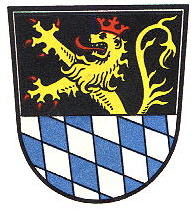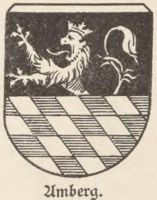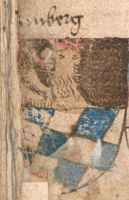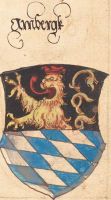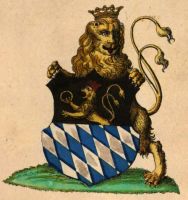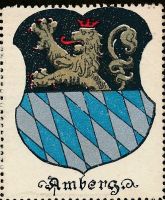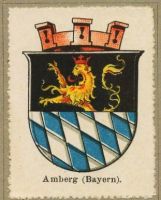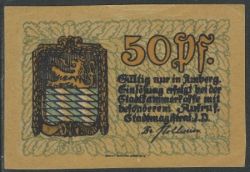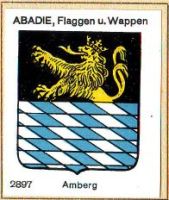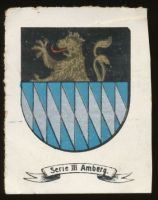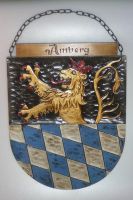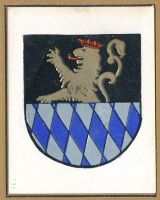Amberg (Oberpfalz): Difference between revisions
Knorrepoes (talk | contribs) m (Text replacement - "{{media}}" to " {{de1}} {{media1}}") |
Knorrepoes (talk | contribs) m (Text replacement - "{{de}}" to "") |
||
| Line 1: | Line 1: | ||
'''AMBERG''' | '''AMBERG''' | ||
Revision as of 14:47, 26 December 2022
AMBERG
State : Bayern
Urban District (Kreisfreie Stadt) : Amberg
Additions : 1972 Ammersricht, Gailoh, Karmensölden, Raigering
| German | Geteilt; oben in Schwarz ein wachsender, rot gekrönter und rot bewehrter goldener Löwe, unten die bayerischen Rauten. |
| English | (Oberpfalz) No blazon/translation known. Please click here to send your (heraldic !) blazon or translation |
Origin/meaning
The arms are a combination of the lion of the Pfalz and the arms of the Wittelsbach family (see the arms of Bayern/Bavaria). The city was a possession of the Wittelsbach family, who were also Counts of the Pfalz. Amberg became a city at the end of the 13th century. The arms first appear on the seals in the 14th century and have basically not changed since. In the 16th and 17th century a crowned lion was often added as a supporter, but disappeared again in later times.
Older seals only show St. George, the patron saint of the city.
The arms in a 16th century manuscript
The arms in an album from around 1910
The arms in the Wappen-Sammlung (+/- 1910)
The arms by Hupp in the Kaffee Hag albums +/- 1925
The arms in the Abadie albums
The arms in an album +/- 1905
The arms in an album, 1950s
The arms in the Deutsches Wappenmuseum
The arms in an album from 1930s
The arms in an album from 1968
Literature: Stadler, 1964-1971, 8 volumes.
